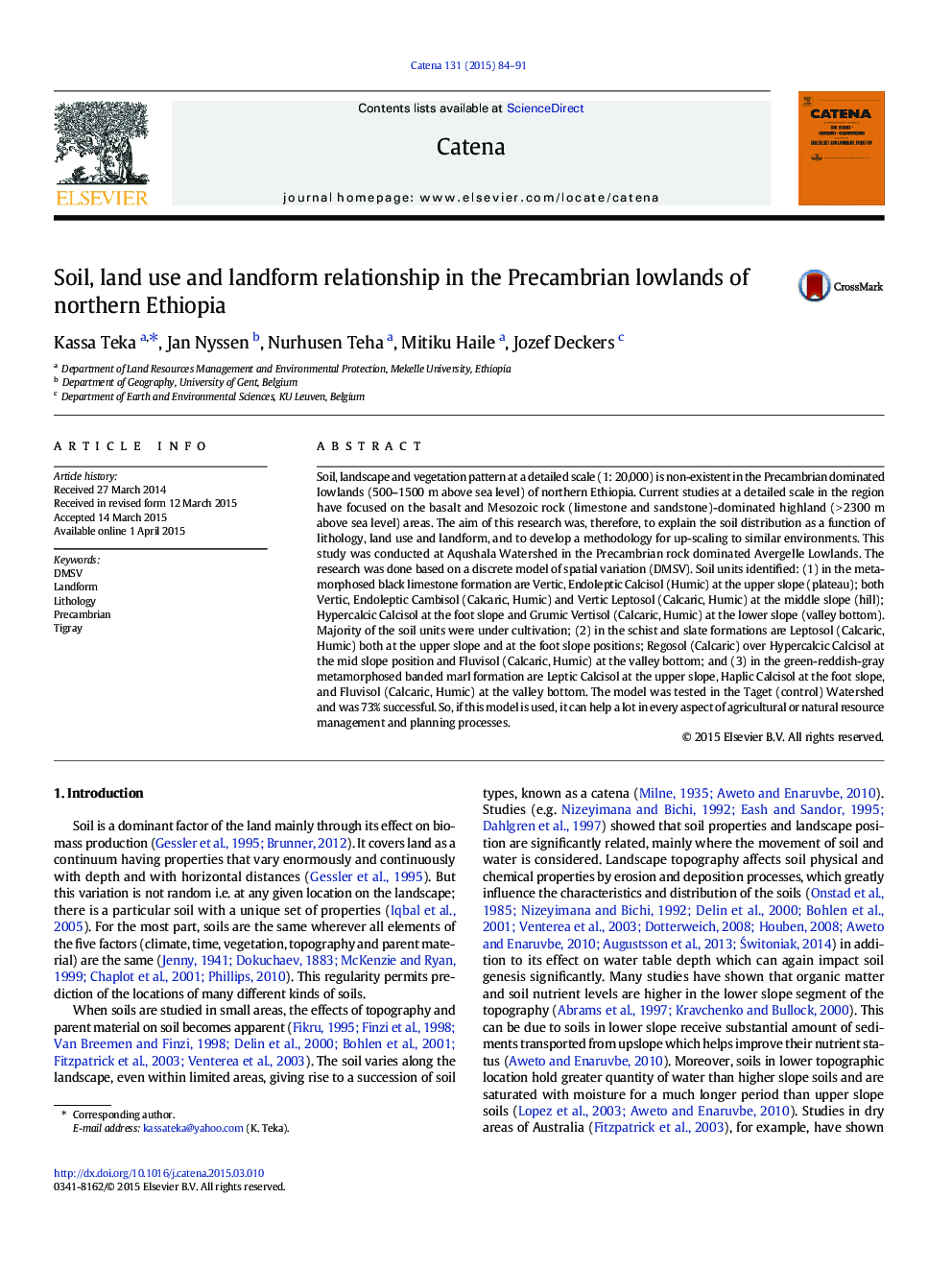| Article ID | Journal | Published Year | Pages | File Type |
|---|---|---|---|---|
| 4571128 | CATENA | 2015 | 8 Pages |
•Major soil types identified in the metamorphosed black limestone formation were mainly used for crop cultivation.•Soil types in the schist and slate formations were under savannah woodland.•Soils types in the green-reddish-gray metamorphosed banded marl formation were used for settlement.•The model was tested in Taget Watershed and was 73% successful.
Soil, landscape and vegetation pattern at a detailed scale (1: 20,000) is non-existent in the Precambrian dominated lowlands (500–1500 m above sea level) of northern Ethiopia. Current studies at a detailed scale in the region have focused on the basalt and Mesozoic rock (limestone and sandstone)-dominated highland (> 2300 m above sea level) areas. The aim of this research was, therefore, to explain the soil distribution as a function of lithology, land use and landform, and to develop a methodology for up-scaling to similar environments. This study was conducted at Aqushala Watershed in the Precambrian rock dominated Avergelle Lowlands. The research was done based on a discrete model of spatial variation (DMSV). Soil units identified: (1) in the metamorphosed black limestone formation are Vertic, Endoleptic Calcisol (Humic) at the upper slope (plateau); both Vertic, Endoleptic Cambisol (Calcaric, Humic) and Vertic Leptosol (Calcaric, Humic) at the middle slope (hill); Hypercalcic Calcisol at the foot slope and Grumic Vertisol (Calcaric, Humic) at the lower slope (valley bottom). Majority of the soil units were under cultivation; (2) in the schist and slate formations are Leptosol (Calcaric, Humic) both at the upper slope and at the foot slope positions; Regosol (Calcaric) over Hypercalcic Calcisol at the mid slope position and Fluvisol (Calcaric, Humic) at the valley bottom; and (3) in the green-reddish-gray metamorphosed banded marl formation are Leptic Calcisol at the upper slope, Haplic Calcisol at the foot slope, and Fluvisol (Calcaric, Humic) at the valley bottom. The model was tested in the Taget (control) Watershed and was 73% successful. So, if this model is used, it can help a lot in every aspect of agricultural or natural resource management and planning processes.
